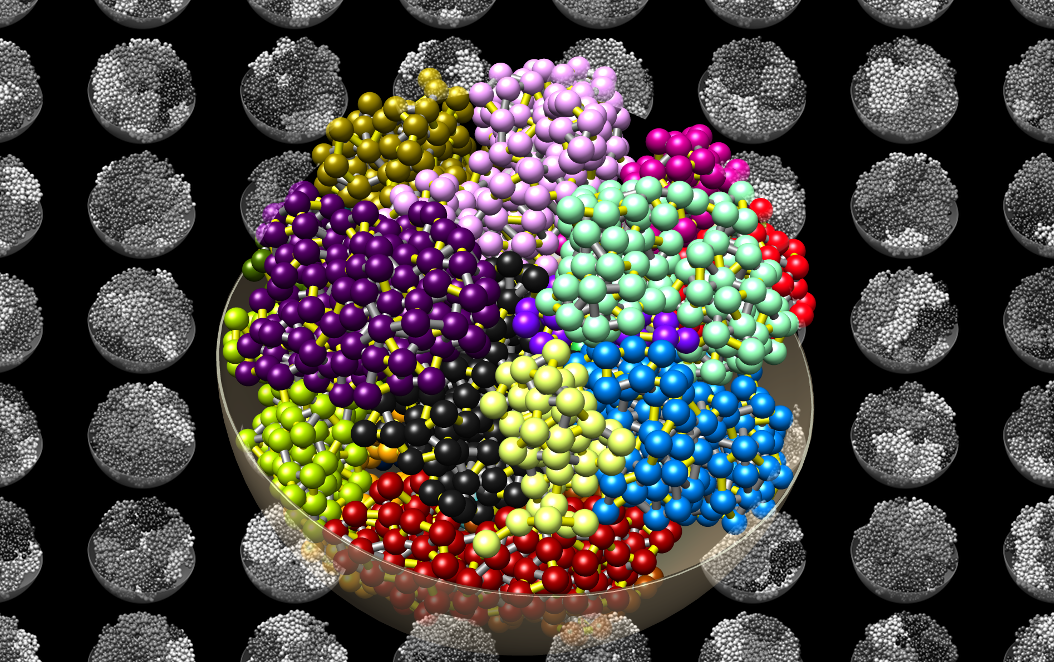chromflock is a software package to deconvolve bulk Hi-C data into putative single-cell structures. The overall scheme is borrowed from PGS although it is not a direct fork.
Chromflock will:
- Work with haploid as well as diploid structures.
- Can integrate GPSeq data for radial preferences.
- Supports spherical as well as an ellipsoidal domain for the beads.
The documentation is not complete at the moment and it is suggested that anyone interested in chromflock start by reading Kalhor et al, 2012, especially the supplementary materials since much of the terminology used here can be traced back to that paper.
There are no pre built packages for chromflock so it has to be built from source. If all dependencies are installed it should be simple as:
make
./makedeb-ubuntu_2204.sh
sudo apt-get install ./chromflock_x.y.z_amd64.debmore details can be found in INSTALL.md.
Chromflock requires at least two data inputs
- A contact probability matrix,
$A$ , where$A(i,j)$ is the probability that bead$i$ and$j$ is in contact. This is typically constructed from a (bulk) Hi-C matrix. - A label vector,
$L$ defining how many beads there are and what numerical label each bead has.
and produce a user-specified number of putative single-cell 3D structures with a binary contact matrix for details, see USAGE.md as well as the man pages.
chromflock was used in
The ideas behind it can be found in the following papers:
For random numbers chromflock uses
